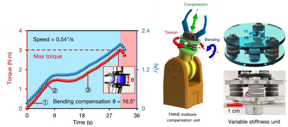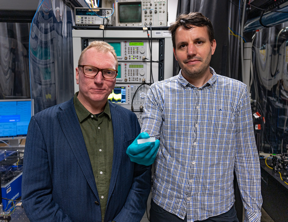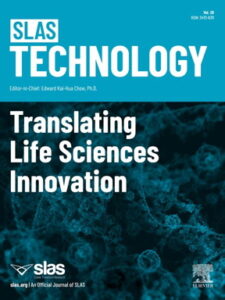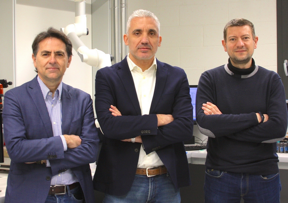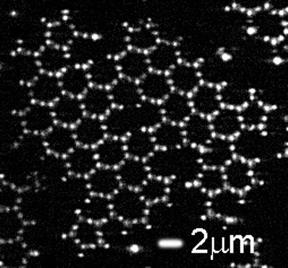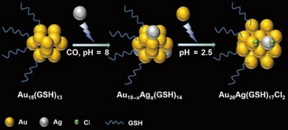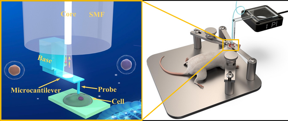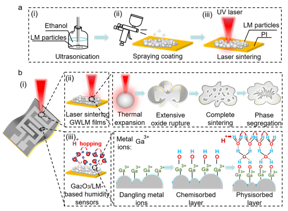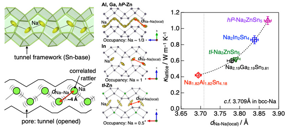Home > News > Carbon nanotubes forecast when vegetables spoil and buds bloom
April 2nd, 2020
Carbon nanotubes forecast when vegetables spoil and buds bloom
Abstract:
This is where the CNTs come in. Single-walled CNTs have several attributes that make them well-suited for sensing processes that involve the transfer of electrons – the basis of any chemical reaction. The CNTs Fong and Swager and their colleagues worked with are p-type semiconductors, so n-type dopants – anything that donates electrons to the CNT – will diminish their conductivity. The CNTs’ curved graphene surface also makes their electronic properties incredibly sensitive to dopants in their environment.
Source:
physicsworld.com
| Related News Press |
News and information
![]() Electricity harvesting from evaporation, raindrops and moisture inspired by nature January 6th, 2023
Electricity harvesting from evaporation, raindrops and moisture inspired by nature January 6th, 2023
![]() Lithium-sulfur batteries are one step closer to powering the future January 6th, 2023
Lithium-sulfur batteries are one step closer to powering the future January 6th, 2023
![]() Wafer-scale 2D MoTe₂ layers enable highly-sensitive broadband integrated infrared detector January 6th, 2023
Wafer-scale 2D MoTe₂ layers enable highly-sensitive broadband integrated infrared detector January 6th, 2023
Possible Futures
![]() Development of bio-friendly transparent temperature sensor technology that precisely measures temperature changes by light January 6th, 2023
Development of bio-friendly transparent temperature sensor technology that precisely measures temperature changes by light January 6th, 2023
![]() Dual-site collaboration boosts electrochemical nitrogen reduction on Ru-S-C single-atom catalyst January 6th, 2023
Dual-site collaboration boosts electrochemical nitrogen reduction on Ru-S-C single-atom catalyst January 6th, 2023
Sensors
![]() Development of bio-friendly transparent temperature sensor technology that precisely measures temperature changes by light January 6th, 2023
Development of bio-friendly transparent temperature sensor technology that precisely measures temperature changes by light January 6th, 2023
![]() Wafer-scale 2D MoTe₂ layers enable highly-sensitive broadband integrated infrared detector January 6th, 2023
Wafer-scale 2D MoTe₂ layers enable highly-sensitive broadband integrated infrared detector January 6th, 2023
![]() New nanowire sensors are the next step in the Internet of Things January 6th, 2023
New nanowire sensors are the next step in the Internet of Things January 6th, 2023
Announcements
![]() Electricity harvesting from evaporation, raindrops and moisture inspired by nature January 6th, 2023
Electricity harvesting from evaporation, raindrops and moisture inspired by nature January 6th, 2023
![]() Lithium-sulfur batteries are one step closer to powering the future January 6th, 2023
Lithium-sulfur batteries are one step closer to powering the future January 6th, 2023
![]() Wafer-scale 2D MoTe₂ layers enable highly-sensitive broadband integrated infrared detector January 6th, 2023
Wafer-scale 2D MoTe₂ layers enable highly-sensitive broadband integrated infrared detector January 6th, 2023
Interviews/Book Reviews/Essays/Reports/Podcasts/Journals/White papers/Posters
![]() Electricity harvesting from evaporation, raindrops and moisture inspired by nature January 6th, 2023
Electricity harvesting from evaporation, raindrops and moisture inspired by nature January 6th, 2023
![]() Lithium-sulfur batteries are one step closer to powering the future January 6th, 2023
Lithium-sulfur batteries are one step closer to powering the future January 6th, 2023
![]() Wafer-scale 2D MoTe₂ layers enable highly-sensitive broadband integrated infrared detector January 6th, 2023
Wafer-scale 2D MoTe₂ layers enable highly-sensitive broadband integrated infrared detector January 6th, 2023
Food/Agriculture/Supplements
![]() Scientists offer solutions for risky tap water June 17th, 2022
Scientists offer solutions for risky tap water June 17th, 2022
![]() Polymer fibers with graphene nanotubes make it possible to heat hard-to-reach, complex-shaped items February 11th, 2022
Polymer fibers with graphene nanotubes make it possible to heat hard-to-reach, complex-shaped items February 11th, 2022
![]() Unprecedented view of a single catalyst nanoparticle at work: X-rays reveal compositional changes on active surface under reaction conditions October 1st, 2021
Unprecedented view of a single catalyst nanoparticle at work: X-rays reveal compositional changes on active surface under reaction conditions October 1st, 2021
Research partnerships
![]() New insights into energy loss open doors for one up-and-coming solar tech November 18th, 2022
New insights into energy loss open doors for one up-and-coming solar tech November 18th, 2022
![]() “Kagome” metallic crystal adds new spin to electronics October 28th, 2022
“Kagome” metallic crystal adds new spin to electronics October 28th, 2022
- SEO Powered Content & PR Distribution. Get Amplified Today.
- Platoblockchain. Web3 Metaverse Intelligence. Knowledge Amplified. Access Here.
- Source: http://www.nanotech-now.com/news.cgi?story_id=56103
- 10
- 2020
- 2D
- a
- active
- Adds
- against
- and
- April
- architecture
- asian
- attributes
- basis
- batteries
- between
- Bloom
- broadband
- carbon
- carbon nanotubes
- Catalyst
- Cells
- CGI
- challenge
- Changes
- chemical
- closer
- collaboration
- colleagues
- COM
- come
- computers
- computing
- conductivity
- Connect
- could
- Crystal
- December
- demonstrated
- Devices
- discover
- Disease
- diseases
- doors
- Electronic
- electrons
- emission
- enable
- energy
- Environment
- Ether (ETH)
- fibers
- Find
- First
- Forecast
- from
- gif
- Graphene
- Harvesting
- How
- Hybrid
- implications
- important
- in
- incredibly
- independent
- infection
- insights
- inspired
- integrated
- Internet
- involve
- IT
- January
- large-scale
- layers
- linked
- links
- loss
- make
- MAKES
- material
- measures
- merging
- more
- net
- networks
- New
- news
- next
- novel
- November
- october
- offer
- Offers
- ONE
- open
- Other
- PHP
- plants
- plato
- Plato Data Intelligence
- PlatoData
- possible
- Post
- Powering
- precisely
- processes
- properties
- Protein
- Proteins
- Quantum
- quantum computers
- quantum computing
- Quantum dots
- quantum networks
- reaction
- researchers
- Resistance
- Results
- return
- reveal
- Risky
- Rust
- Save
- scalable
- Search
- semiconductor
- Semiconductors
- sensitive
- sensors
- September
- several
- Share
- Shows
- single
- So
- solar
- Solutions
- Spin
- stable
- start
- Step
- strong
- Study
- submit
- support
- Surface
- Tap
- Technology
- The
- their
- to
- toward
- transfer
- transparent
- treating
- under
- university
- us
- Vegetables
- View
- will
- Work
- worked
- Yahoo
- zephyrnet











